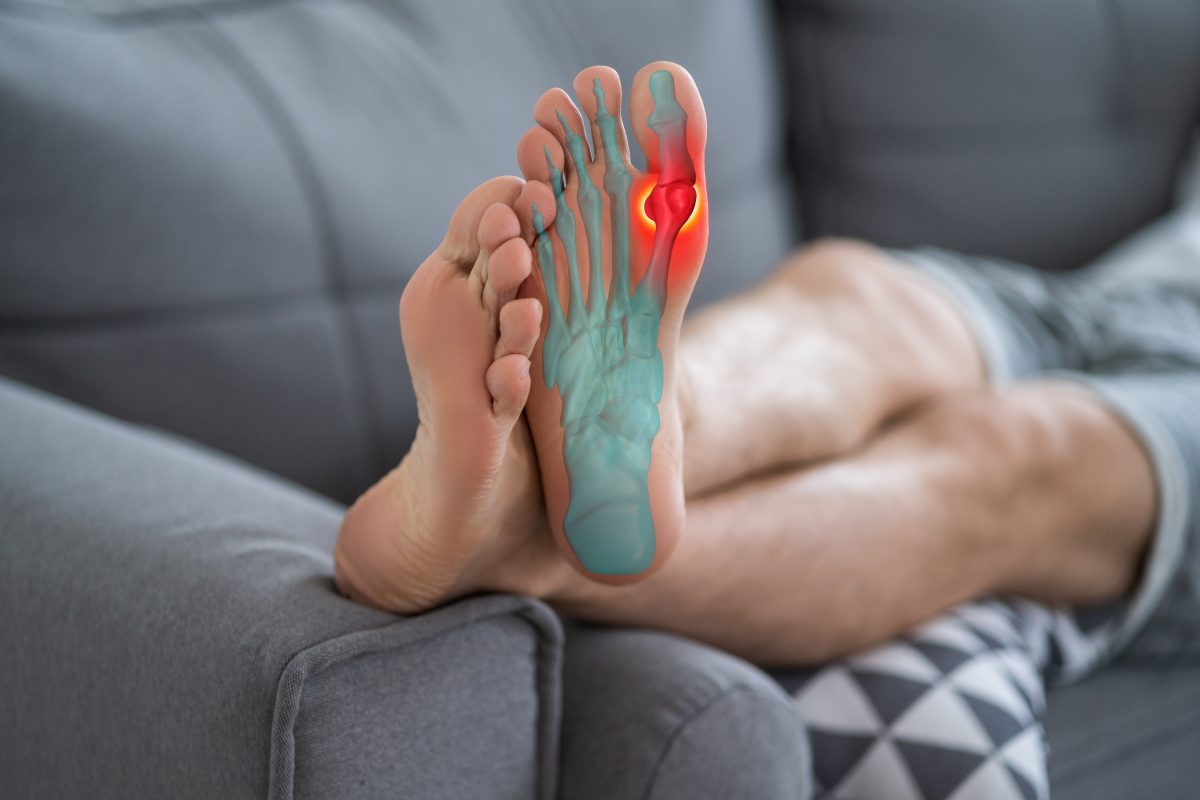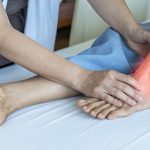This is characterized by pain and swelling in the joints, including the feet, knees and hands, and ankles. This condition is most common in overweight and hypertension men. Gout can be caused by stress, alcohol, and diuretic drugs. Here you can learn all about Gout: Gout Home Remedy
Gout or Arthritis
Gout, also known as uric acid arthritis, is caused by the accumulation of uric acid crystals in joints and periarticular regions. Although it is a chronic inflammation process, clinical signs are usually only apparent in the initial stages.
“The typical picture shows recurrent episodes with acute arthritis that are separated by intercritical periods of variable length. Dr. Aldo Obeda, a rheumatologist, says that episodes of acute inflammation often affect the periarticular structures, such as the pre-patellar or olecranial bursae.
According to him, patients suffering from long-term gout may develop “tophi” (MSU crystal accumulations). These crystals can accumulate in any area, but most commonly in the subcutaneous cellular tissues and peri-articular regions. Ojeda points to the fact that tophi can be found in intra-articular areas and cause long-term functional limitations.
These crystals are associated with hyperuricemia, which is an increase in blood uric acid concentrations. This refers to a plasma level of uric acid above 7 mg/dL. Hyperuricemia does not necessarily cause crystal deposits or arthritis. However, hyperuricemia patients, whether they are symptomatic or not, are at increased risk for cardiovascular complications. This is due to hyperglycemia, arterial hightension, dyslipidemia, overweight/obesity, and hyperglycemia being metabolic risk factors. There are many natural treatments for gout: Home Remedies For Gout
Gout is more common in Hyperuricemia-prone Men
Hyperuricemia affects about 10% of the world’s population. However, only 10% of those with hyperuricemia get gout. It is most common in middle-aged men, mostly those with metabolic syndrome (overweight and dyslipidemia) and hypertension.
Gout and hyperuricemia are increasing in prevalence, according to some experts. This is associated with lifestyle changes that can lead to an increase in cardiovascular risk factors. Gout is caused by a decreased renal excretion. While most cases of gouty patients are not caused by uric acid deficiency (idiopathic, or gouty), secondary gout can be caused by a variety of drugs and other comorbidities.
Gout Attack
Gout is characterized as recurring episodes of pain, inflammation, and mono or oligoarticular function impotence. It is most commonly experienced in lower limb joints (podagra), ankles, knees, ankles, and occasionally the elbow. These episodes of inflammation usually resolve themselves within 24 hours. Intercritical gout is a condition in which the joints become completely symptomatic during periods of inflammation.
This phase is of variable duration and causes no inflammatory signs in the joints. The physical exam is normal. Some patients experience chronic inflammation that affects multiple joints. This is known as chronic tophaceous arthritis. These images can be mistaken for rheumatoid or other causes of inflammatory polyarticular discomfort. Many people suffer from gout and share their experiences here: Gout Treatment
Diagnosis
Gout diagnosis is typically clinical and is based on episodes of episodic pain and inflammation. This is especially true when tophi is present. Additional means include radiography, tomography and magnetic resonance imaging. Joint ultrasound is also used to support the diagnosis. Synovial fluid, or aspirate from tophi, is where monosodium-urate crystals are identified. These can even be detected in intercritical gout. Although the uric acid levels rise in chronic crises, they may remain constant. However, this does not necessarily rule out the possibility of gout.
Treatment
Acute gout crises can be treated with rest and anti-inflammatory drugs like NSAIDs or colchicine. These drugs can be used locally to infiltrate large joints, such as the knees. However, it is important that any possibility of joint infection have been ruled out. The goal of treatment in the intercritical period as well as chronic forms is to maintain low plasma uric acid levels. This will prevent acute gout attacks from occurring and also help avoid joint damage. Sometimes, it is necessary to perform surgery to remove tophi. This is especially true if the tophi cause a mechanical impediment.
Asymptomatic hyperuricemia does not usually require any treatment. However, it may need a metabolic assessment to determine and control other cardiovascular risk factors. Changes in diet and the restriction of alcohol consumption can help reduce the number of crises as well as better control of uric acid levels. This is the best natural supplement for Gout: Gout Treatment











